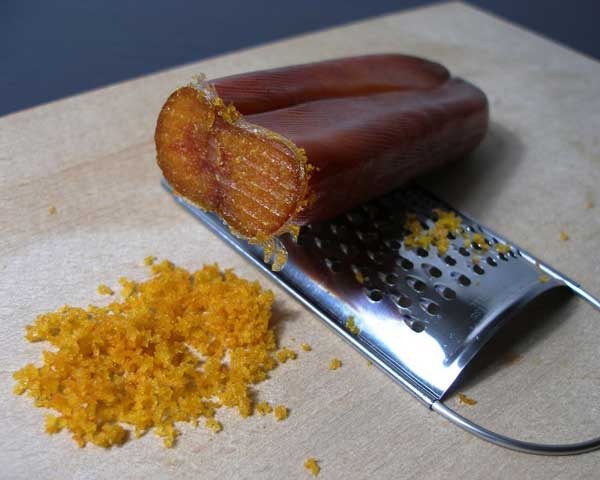What Is Bottarga?
If you've eaten at a fine Italian restaurant recently, you've probably spotted bottarga (or botargo) on the menu, usually as an accompaniment to a pasta dish. Even after ordering and trying it, it's a difficult flavor to pin down. So just what is bottarga, exactly?
Bottarga is dried and salted fish roe. Sometimes called the "poor man's caviar" (even though it isn't especially cheap), it's usually made from mullet, but sometimes it's made from the roe of tuna or swordfish as well.
To produce bottarga, the roe pouch is carefully removed, then massaged by hand in order to remove all air pockets. It's then cured in sea salt for several weeks before being rolled in beeswax in order to further preserve it, and the finished product resembles a firm, dense sausage. This specific preparation dates back to long before the Italians; in fact, it's been traced all the way back to the Phoenicians.
The flavor of bottarga is strong, salty, and fishy, and it's best used sparingly, grated over pastas or omelettes. It's not overly intense, though, and can be that "kick" that many pasta dishes need to make them really sing. You'll also occasionally see it served on its own as an appetizer with a squeeze of lemon, but we're not going to lie: eating it straight can be an acquired taste. It's most popular in Sicily and Sardinia, but can also be found in one form or another across most of the Mediterranean.
So the next time you see bottarga on a menu, give it a shot. You won't be disappointed.
